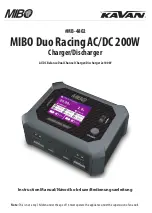
PV array too small
If the PV array power rating is less than the solar charger nominal power rating, the solar charger cannot output more power than
the connected solar array can provide.
Temperature above 40°C
When the solar charger heats up, eventually the output current will derate. When the current is reduced naturally the output power
will reduce as well.
The controller is operational up to 60°C, with a full rated output up to 40°C.
In case the solar charger heats up quicker than expected, pay attention to the way it has been mounted. Mount it in such a way
that the generated heat can dissipate.
Ideally mount the solar charger on a vertical surface with the terminals facing downwards.
If the solar charger is located in a closed enclosure, such as a cabinet, make sure that cold air can enter and hot air can leave the
enclosure. Mount vents in the enclosure.
For very hot environments consider mechanical air extraction or provide air conditioning.
9.5.4. Max PV output power relates to battery voltage
The output current of the solar charger is current limited to its rated current. This means that the output power will vary, depending
on the voltage of the battery.
For example:
A 75/15 solar charger has an output current rating of 15A. This is the current that is going into the battery. This means that if the
solar charger is connected to a 12V battery you will get less power into your battery than with a 24V battery.
• For a 12V battery this is 15A x 12V = 180W.
• For a 24V battery this is 15A x 24V = 360W.
So, although a 360 W panel is connected to the solar charger, it will not be able to output the same power into a 12V battery than
it will when connected to a 24V battery.
Example of differences in output power at different battery voltages
9.5.5. Mixed PV panel types
It is not recommended to connect a mix of different PV panel types to the same solar charger.
Only use solar panels that are the same brand, type and model.
9.5.6. PV connections burned or melted
Burned or melted PV cables or connections are generally not covered under warranty. In most case this is due to any of the
following reasons:
Solar cable
• Cables with rigid core wire or rigid strands used.
• Cables where the core wire has been soldered.
• Cable too thin - remember that the current will be higher when the PV voltage is lower. For more information on cable thickness
see the
.
Screw terminals
MPPT solar charger manual
Page 52
Troubleshooting and Support















































